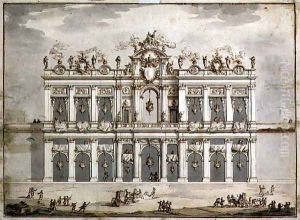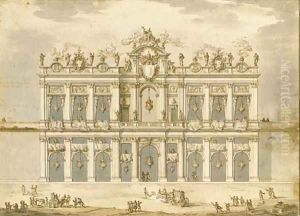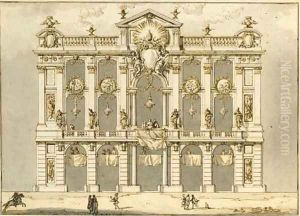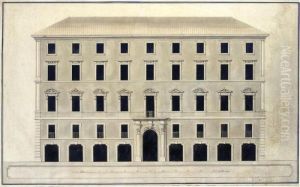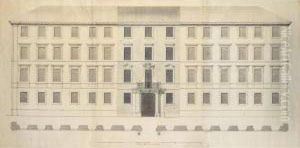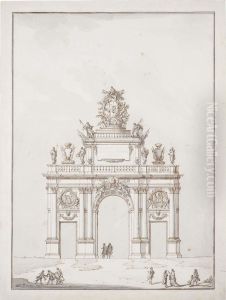Paolo Posi Paintings
Paolo Posi was an Italian architect and set designer, recognized for his contributions during the late Baroque and early Neoclassical periods. Born in Siena in 1708, Posi moved to Rome, where he spent the majority of his career. He became a favored architect among the Roman aristocracy and high-ranking clergy, contributing to the architectural landscape of 18th-century Italy.
Posi was trained under his uncle, the architect Giuseppe Nicola Nasini, and he was deeply influenced by the Baroque traditions, although his later work began to reflect the transition to Neoclassicism. He was known for his elaborate and theatrical designs, both in temporary settings for festivities and in permanent structures.
Throughout his career, he designed numerous public and private buildings, including the completion of the façade of the Church of San Giovanni dei Fiorentini in Rome and the grand entrance staircase of the Palazzo Chigi-Odescalchi. Posi was also involved in urban planning and was responsible for redesigning parts of the city of Narni in Umbria.
Furthermore, Posi was renowned for his stage designs for operas and other dramatic presentations, which were characterized by their intricate detail and the use of perspective to create the illusion of depth. His sets were not only masterpieces of design but also engineering marvels that incorporated moving parts and innovative use of space.
Paolo Posi's work was marked by a dynamic interplay of architectural elements, and he was highly regarded for his ability to blend spectacle with structural functionality. Despite his significant contributions, many of Posi's temporary works, such as his festival decorations and stage designs, have not survived, but his architectural legacy can still be witnessed in the buildings and projects he left behind. He died in Rome in 1776, leaving behind a legacy that would influence future generations of architects and set designers.
